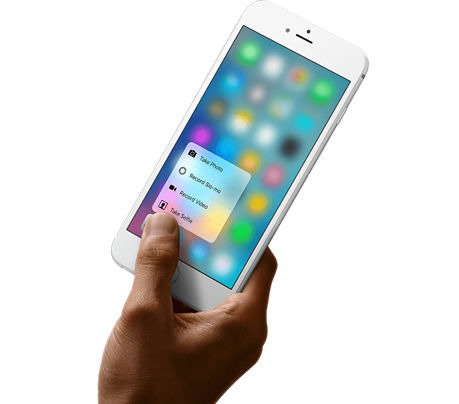As of Monday, Apple is allowing authorized repair outfits to use software calibration for 3D Touch on iPhones, which should streamline the repair process for both technicians and iPhone owners.
The change was announced in a memo sent to service providers by Apple, the contents of which were obtained by iMore. AppleInsider can confirm the existence of the note, but not the specific contents.
Until this week, technicians repairing iPhone displays with 3D Touch were required to hook a phone up to a special "calibration fixture." This required providers to both own and set aside space for the hardware, which created inherent restrictions on who could perform display swaps.
However, this software calibration in no way removes the requirement to have external gear to fix an iPhone. The Touch ID sensor registration with the Secure Enclave and the rest of the hardware still requires a custom piece of hardware designed and supplied by Apple
3D Touch has been on most iPhones since 2015's iPhone 6s. The exceptions are the iPhone SE, and significantly the new iPhone XR, even though that product has other milestone technologies like Face ID and an edge-to-edge display.
The feature complicates the assembly and cost of iPhones though, and has failed to take off the way Apple originally envisioned. Many third-party developers have skipped support or implemented it in a limited manner, for instance enabling homescreen shortcuts and nothing else.
 Roger Fingas
Roger Fingas








 Brian Patterson
Brian Patterson
 Charles Martin
Charles Martin


 Malcolm Owen
Malcolm Owen
 William Gallagher
William Gallagher
 Christine McKee
Christine McKee
 Marko Zivkovic
Marko Zivkovic









4 Comments
Can you imagine what an iPhone would look like if iFixit had its way? User replaceable battery, easily disassembled, off the shelf parts, no proprietary fasteners? It would be twice as thick and look totally hideous. How many times have you seen someone drop their phone and the back case and battery went flying across the floor? Can anyone point out a popular phone with a user replaceable battery these days? Even my microwave oven has special screws so the user can't get it open to mess with the magnetron.
iOS 12 deploy today?
3D touch hasn't taken off because it's not a natural human action. Apple's implementation at least is too subtle and finicky. Nothing else in our technological culture has ever operated in different modes when merely applying a very specific (not too much, not too little) extra amount of pressure.
In other words: it is non-intuitive! The most common human use of adding more pressure is irritation: when something doesn't work, we get annoyed and push on it harder or grip it tighter because our desire to be subtle and cooperative is eroded by irritation. Ever heard of percussive maintenance?
Computers are RIFE with irritation generators. When it's not overt bad design, it's bugs, and often both (but the tech world, geeks especially, try to make users feel like everything is their own fault).
If iOS could "behave better" when receiving an angry grip, then 3D Touch would be brilliant. That's not how it works. Instead, users lose taps because they're too heavy. This is an invisible event to them. All they know is "it didn't work when I tapped". Then they get irritated and tap harder, compounding the situation.
Then there's Apple's poor implementation of text selection/editing in the trackpad mode. Trackpad mode should be really useful (especially since the basic tapping version of text selection is almost utterly useless in Safari text edit fields). But it's only just usable, frustratingly:
Half the time the mode trigger won't work and you find yourself repeatedly trying to trigger cursor mode (getting angrier and more forceful each time), or it triggers but the cursor won't actually move because of a bug locking it in place (the good ol' "stop it and start over again" workaround), or the cursor bounces back a character when you release, in an effort to move to the far left, in front of the first letter in a text box. Then it wants to change modes on you (between cursor movement & text selection) while sliding your finger around, because you have to somehow know exactly how much pressure is needed for each mode or to avoid changing modes (plus the general selection itself is clumsy because it resists fine grained selection and reacts differently to different characters; try repeatedly selecting an entire sentence in the middle of a paragraph, including the first letter and the period).
The best example I've seen of 3D Touch has been in a third party music app (Seaboard 5D), and the majority of users don't use that app. The iPhone is too small for that use to be all that handy anyway.
3D Touch is a perfect example of Apple's lack of usability testing. They used to be devoted to usability testing but that seems to have ended at the development of iOS 7. Today's Apple is not the Apple of design fame.